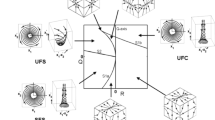Abstract
Edge-flames arise in non-premixed combustion, and include the familiar triple, or tribrachial flames. They can exist for all Damköhler numbers for which the upper and lower branches of the S-shaped response of the underlying diffusion flame simultaneously exist, and have negative propagation speeds (corresponding to failure waves) when the Damköler number is close to the quenching value, positive speeds (corresponding to ignition waves) when the Damköler number is close to the ignition value. A previously described one-dimensional model of edge-flames is here applied to a number of new situations. These include: a description of unbounded edge-flames, for unit Lewis numbers, over the entire range of Damköler numbers; a description of unbounded edge-flames when one of the Lewis numbers differs from unity, for which it is shown that propagating edge-flames of stationary structure may not exist; and an analysis of an edge-flame near a wall, without flow between the wall and the flame. In the case of unbounded edge-flames, a simple formula for the edge speed is derived that may be of value in the computation of turbulent combustion fields in the laminar flamelet regime.
Similar content being viewed by others
References
J. W. Dold, Flame propagation in a non-uniform mixture: analysis of a slowly-varying triple-flame. Combustion and Flame 76 (1989) 71–88.
D. L. Dietrich, H. D. Ross and J. S. T'ien, Candle flames in nonbuoyant and weakly buoyant environments, paper AIAA-94-0429, 34th Aerospace Sciences Meeting, Reno, Nevada, January, 1994.
J. D. Buckmaster, Edge-flames and their stability. Combustion Science and Technology 115 (1996) 41–68.
J. Buckmaster and R. Weber, Edge-flame-holding, Twenty-sixth Symposium (International) on Combustion. Pittsburgh: The Combustion Institute (1996) to appear.
C. M. Müller, H. Breitbach and N. Peters, Partially premixed turbulent flame propagation in jet flames. Twenty-fifth Symposium (International) on Combustion. Pittsburgh: The Combustion Institute (1994) 1099–1106.
J. D. Buckmaster and G. S. S. Ludford, Lectures on Mathematical Combustion. Philadelphia: SIAM (1983) 21.
P. N. Kioni, B. Rogg, K. N. C. Bray and A. Liñán, Flame speed in laminar mixing layer: the triple flame. Combustion and Flame 95 (1993) 276–290.
J. W. Dold, L. J. Hartley and D. Green, Dynamics of laminar triple-flamelet structures in non-premixed turbulent combustion. In: Paul C. Fife, A. Liñán, and F. Williams (eds.), Dynamical Issues in Combustion Theory. New York: Springer-Verlag (1991) 83–105.
J. Buckmaster and D. Milkolaitis, The premixed flame in a counterflow. Combustion and Flame 47 (1982) 191–204.
Author information
Authors and Affiliations
Rights and permissions
About this article
Cite this article
Buckmaster, J. Edge-flames. Journal of Engineering Mathematics 31, 269–284 (1997). https://doi.org/10.1023/A:1004287411382
Issue Date:
DOI: https://doi.org/10.1023/A:1004287411382




